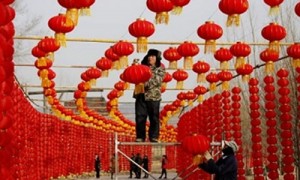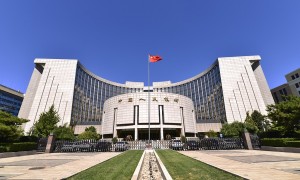As the chair of the CICA for the next two years, China is expected to make the interaction mechanism on security, more practical and effective. Analysts in China say this would be easier to do if there was solid economic cooperation in the region. As part of efforts in that direction, China has been making efforts to make the region more economically integrated. And the idea of the new Silk Roads, both inland and maritime, are now leading the way.
Chinese President Xi Jinping reiterated calls for the building of a "Silk Road Economic Belt" during his recent European trip. A similar idea in the form of a "Maritime Silk Road" was also proposed by President Xi at the 16th Asean+China Summit in Indonesia. These new ideas aren’t about rebuilding the ancient Silk Road as it existed many many centuries ago. It is about re-connecting those countries that have had a shared trading past. The ultimate aim is similar to what the ancient Silk Road achieved: boosting regional interaction.
"The creation of the new Silk Road is about economic and trade cooperation in the region along the cultural route of the ancient Silk Road. It does not intend to rebuild the road, but to build solid bilateral and multilateral free trade agreements, joint infrastructure projects, and other forms of high-level economic and cultural exchange so the region can adapt to economic globalization." Professor He Maochun with Tsinghua University said.
Asia produces a third of global GDP with its population of over four billion and ample labor supply. In the past decade and more, intra-regional trade in Asia has expanded from 1 trillion US dollars to 3 trillion. That share of intra-regional trade between Asian countries, has increased from 30 per cent to 50 per cent, of the total trade these countries engage in.
However, this is far lesser than the comparable figure of more than 60 percent of the European union .
"There are three major challenges to the idea of the new Silk Road. First, China is now the world’s 2nd largest economy, and the biggest trader. But the country is still lacking experience in building free trade zones. Second, most Asian countries are developing nations, with low per capita GDP and uneven regional development. Over 700 million people in Asia still live below the international poverty line. And third, our research into other countries’ market lacks depth, and hasn’t taken their domestic, economic and political situation into consideration." Professor He said.
The idea of the new Silk Road is still being fully conceived, but some relevant projects are already on track. The China-Europe railway program has been re-launched as a freight train finished its trip from central China to Poland last month.
China is ready to draw up plans for a Bangladesh-China-India-Myanmar economic corridor, and another between China and Pakistan. China is also planning a program to promote cultural cooperation among countries along the ancient Silk Road.
The impact of the international financial crisis still affects the world. As the World’s second largest economy with a stable growth for more than three decades, China has the capability and is responsible to bring more energy to the Asian economy. How can the region be win-win? China is trying to answer the question by proposing the initiatives of the new silk roads.







